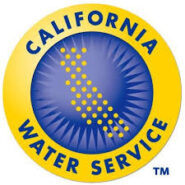The focal point of water for Kern County
The Sacramen to-San Joaquin Delta is the focal point of water for Kern County. The Delta is a series of levees that separate water channels from islands. Most of the Delta islands are actually “holes”, meaning they are below sea level. Much like the levees surrounding New Orleans, the Delta levees protect Delta islands from flooding. The Sacramen to River system is the source of two-thirds of the water that flows through the Delta.
Since Kern County receives less than seven inches of rain each year, water must be “imported” from other areas to supplement the needs of the citizens, businesses and farms. For the most part, that importation of water comes from the Delta region. In fact, as much water comes through the California Aqueduct from the Delta each year, as is provided by the Kern River. This movement of water from northern to southern California is the subject of much controversy, politics and regulation.
Before large water projects and systems were developed in the 20th century, Kern County relied on rain, the Kern River and groundwater for its water supply. As the population increased, businesses sprouted up and farming grew more intense, the groundwater became scarce. By the 1950s, Kern County and much of Southern California was looking for a way to bring more water in to the area.
The solution came in the form of the California State Water Project (SWP), a mammoth project that brought water from Northern California rivers all the way down to Southern California, through Kern and Los Angeles. It is a water s torage and delivery system of reservoirs, aqueducts, power plants and pumping plants, which extends for more than 600 miles (two-thirds of the length of California). Areas that contracted for the SWP, paid the costs of the project and for the water it brought with it. To this day, Kern County, through the Kern County Water Agency, pays for the SWP and the water that comes to Kern.
What are the problems with the Delta?
There are many challenges in the Delta that include native species in decline while invasive species of plants and animals thrive. Toxins from upstream areas are being introduced which impact the food web; Diversions out of the Delta entrain juvenile fish. Preda tors continue to impact populations of native species and fragile levees put the water supplies for 25 million people and millions of acres of agriculture at risk.
In the past, the focus has been on state and federal water projects as the primary cause of the decline of native fish populations; however, a more comprehensive solution is required to change the Delta ecosystem. The Bay-Delta Conservation Plan is being developed to change where and how the state and federal projects divert their water supplies. Res toration projects are being planned to create high value habitat for fish to reside and for the food web to thrive.
Here are some links that provide more information about the Delta:





